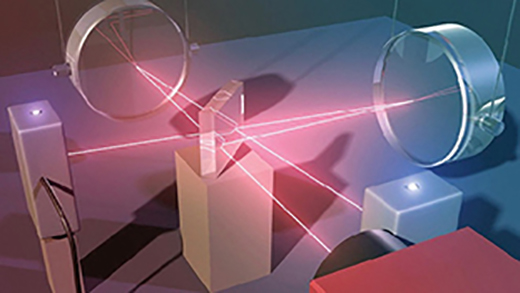Optical fiber has unique features that caused to play a key role in the development of communication and data transmission. Among these features one that made interests for researchers and craftsmen in recent decades is the sensibility of optical fibers.
Optical Fiber Sensors
Optical fiber has unique features that caused to play a key role in the development of communication and data transmission. Among these features one that made interests for researchers and craftsmen in recent decades is the sensibility of optical fibers. We can also mention real-time monitoring, multi-parameter sensing, high sensitivity, wide dynamic range, electromagnetic interference immunity, corrosion resistance, remote transmission, networking capability and suitable for harsh environment.
Fiber optic sensor is a system that can produces desired optical signal corresponding to interactions of physical, chemical, biological quantities, and so on by guided light in optical fiber. By using an optical fiber sensor with its proper design, any environmental variable, such as changes in temperature or strain at any point of the fiber, affects the optical properties of the fiber at the point and the characteristics of guided light therein. For example, by measuring the change in temperature or strain, it is possible to detect leakage or aggressor, respectively. It also can be used to precisely detect the frequency and amplitude of acoustic vibrations.

In general, optical sensor systems consist of a light source, sensing unit and detection system. There are three discrete, semi-distributed and distributed methods for direct using of fiber as a sensor unit. In discrete and semi-distributed method, elements such as Fabry-Perot resonator, Fiber Brag gratins or long-period grating are used as sensors along the optical fiber that are spaced several dozens to hundred meters apart.

In distributed method, the fiber itself is used as a sensor unit. The intensity, phase, and polarization state of the guiding light in the fiber can be influenced by external factors that change the optical properties of the optical fiber. In distributed sensors, a variety of scattering such as Rayleigh, Raman and Brillouin scattering are used in optical fiber. Today using optical sensors based on distributed Rayleigh and Brillouin scattering are used for measuring environmental variables such as temperature, pressure, strain, sound wave, and so on, in different regions, such as frontier to detect aggressor, health monitoring of various types of structures. For example, the detection of cracks in the body of airplanes and concrete structures and the leak detection of oil, gas and water transmission lines.
In recent years, different methods and ideas have been used to improve the performance of these systems in order to enhance spatial resolution, dynamic range, the accuracy of temperature and strain and reduce the noise. One of these efforts is the different design of systems and the use of physics of optical and acoustic modes interaction.
In this group, two members are focused on the issue of optical fiber sensors. I am trying to use Bragg fiber systems that are composed of a core and multilayer cladding for acoustic sensing systems that are considered as a sound sensor. The precise knowledge of this structure, including its acoustic and optical modes, and the proper design of variables, such as the distribution of the refractive index and the thickness of claddings, helps to improve this method. Different methods have been developed to detect sound by optical fiber, such as interferometry, coherent optical time domain reflectometry and phase optical time domain reflectometry, which the basis of all of these methods are acousto-optic effects.






